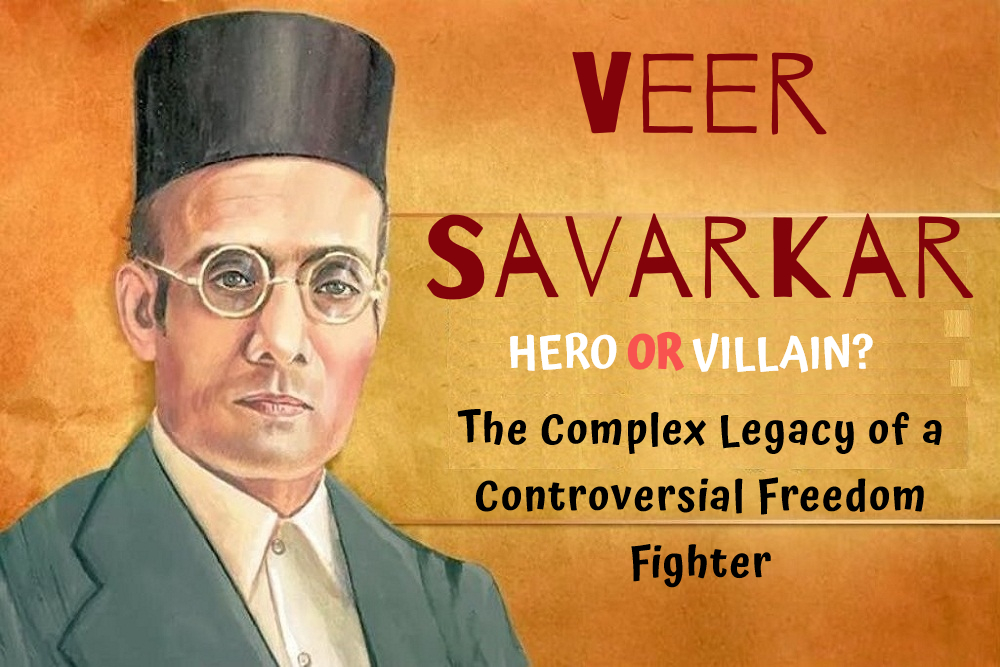Vinayak Damodar Savarkar (28 May 1883 – 26 February 1966), popularly known as Veer Savarkar, was an Indian politician, activist, and writer. He was one of the pioneers of the Hindu nationalist movement in India. Savarkar developed the Hindu nationalist political ideology of Hindutva while imprisoned at Ratnagiri in 1922. He was a leading figure in the Hindu Mahasabha. He started using the honorific prefix Veer (“brave”) since he wrote his autobiography. Savarkar joined the Hindu Mahasabha and popularized the term Hindutva (Hinduness), previously coined by Chandranath Basu, to create a collective “Hindu” identity as an essence of Bharat (India).
Vinayak Damodar Veer Savarkar Biography
Savarkar was born in Bhagur, a small village in Maharashtra, India. He was the youngest of seven children. His father, Damodar Savarkar, was a school teacher and his mother, Radhabai Savarkar, was a homemaker. Savarkar was a bright student and he excelled in his studies. He was also a keen athlete and he won several medals in gymnastics and wrestling.
In 1900, Savarkar went to England to study law. While in England, he became involved in the Indian independence movement. He met other Indian nationalists, such as Shyamji Krishna Varma and Bal Gangadhar Tilak, and he was inspired by their ideas. Savarkar also joined the Abhinav Bharat Society, a secret society that was dedicated to the overthrow of British rule in India.
Veer Savarkar was jailed 3 times
During the British colonial rule, Savarkar was a vocal critic of British imperialism and actively participated in the freedom struggle. He was involved in revolutionary activities and played a key role in organizing the Abhinav Bharat Society, a secret society dedicated to overthrowing British rule in India.
In 1908, Savarkar was arrested by the British government and charged with sedition. He was sentenced to five years of rigorous imprisonment in the Cellular Jail in Andaman and Nicobar Islands. Savarkar spent six years in the Cellular Jail, where he was subjected to harsh treatment. He was tortured and he was kept in solitary confinement for long periods of time.
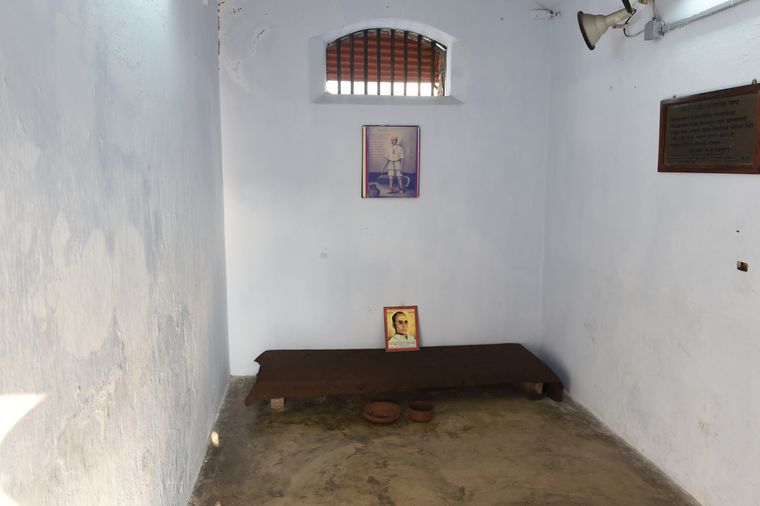
In 1914, Savarkar was released from prison and he returned to India. He continued to be active in the Indian independence movement and he was arrested several times by the British government. In 1924, Savarkar was sentenced to transportation for life in the Andaman Islands. However, he was released in 1937 under the condition that he would not participate in any political activity.
Savarkar continued to be a vocal critic of the British government and he was arrested several times after his release from prison. In 1942, he was arrested for his role in the Quit India Movement. He was released from prison in 1946, a few months before India gained independence.
After independence, Savarkar continued to be active in politics. He was elected to the Rajya Sabha, the upper house of the Indian Parliament, in 1952. He remained a member of the Rajya Sabha until his death in 1966.
The India House
Veer Savarkar is closely associated with India House, a prominent hub for Indian nationalist activities in London during the early 20th century. India House served as a meeting place and residence for Indian students and activists who sought to achieve India’s independence from British colonial rule. Savarkar played a significant role in the activities of India House.
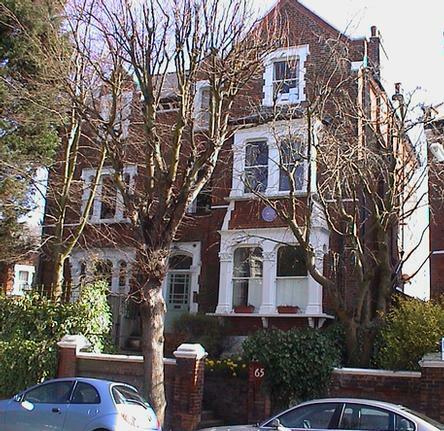
Picture source: LondonRemembers.com
In 1905, Savarkar went to London to pursue higher studies. He became a prominent member of the India House, which was established by Shyamji Krishna Varma, an Indian scholar and freedom fighter. Savarkar, along with other Indian students and revolutionaries, actively participated in discussions, debates, and planning sessions at India House.
Under the umbrella of India House, Savarkar played a key role in organizing revolutionary activities and advocating for Indian independence. He formed the Abhinav Bharat Society, a secret society dedicated to armed rebellion against British rule in India. Savarkar and his associates believed in the power of armed struggle and sought to inspire and train Indian youth to fight for freedom.
Savarkar’s connection with India House and his activities there led to his involvement in several revolutionary plots against the British. One notable incident was the assassination of W.H. Rand, a British officer, in London in 1909. Savarkar was arrested in connection with the assassination and subsequently faced a trial in Britain. He was convicted and sentenced to life imprisonment in the Cellular Jail in the Andaman and Nicobar Islands.
India House played a pivotal role in shaping Savarkar’s revolutionary ideology and providing a platform for nationalist activities. The discussions and interactions at India House influenced his thinking and writings, ultimately contributing to his significant impact on the Indian freedom struggle.
Books by Veer Savarkar
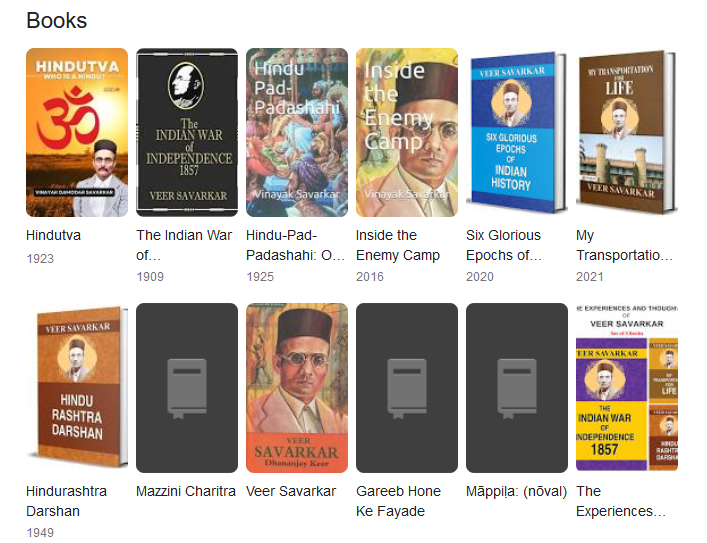
Veer Savarkar was a prolific writer and penned numerous works throughout his life. Some of his famous writings include:
- “The First War of Indian Independence” (1907): In this book, Savarkar provided a historical account of the 1857 rebellion against British rule in India. He argued that the rebellion was not a mere mutiny but a significant uprising for independence.
- “Hindutva: Who Is a Hindu?” (1923): This influential treatise by Savarkar introduced the concept of Hindutva, which he defined as the essence of Hindu identity and the basis for a united Hindu nation. The book delves into the historical, cultural, and political aspects of Hinduism.
- “Six Glorious Epochs of Indian History” (1909): Savarkar’s book presents a comprehensive account of six crucial periods in Indian history, ranging from ancient times to the freedom struggle. He highlighted the contributions of Indian heroes and emphasized the need for national unity and self-determination.
- “Mazi Janmathep” (My Life Sentence) (1909): This autobiography provides a personal account of Savarkar’s experiences during his incarceration in the Cellular Jail in the Andaman and Nicobar Islands. He described the brutal conditions in the prison and the struggles faced by the political prisoners.
Why Veer Savarkar is a controversial figure
Savarkar is a controversial figure in Indian history. He is revered by some as a hero of the Indian independence movement, while others view him as a Hindu extremist. Savarkar’s legacy is still debated today.
Here are some of the reasons why Vinayak Damodar Savarkar is considered a controversial figure:
- He was a proponent of Hindutva, a form of Hindu nationalism that has been accused of being discriminatory and intolerant of other religions.
- He was convicted of sedition and sentenced to transportation for life by the British colonial government.
- He is accused of having links to the assassination of Mahatma Gandhi.
- His writings have been criticized for their anti-Muslim sentiment.
Savarkar’s supporters argue that he was a patriot who fought for India’s independence from British rule. They also point to his contributions to the development of Hindutva as evidence of his greatness. However, his critics argue that his views were divisive and harmful to India’s unity.
Ultimately, whether or not Vinayak Damodar Savarkar is considered a good or bad figure is a matter of opinion. However, there is no doubt that he is a controversial figure who will continue to be debated for many years to come.
Link to Gandhi’s assassination
Veer Savarkar is linked to the assassination of Mahatma Gandhi through his association with Nathuram Godse, the assassin of Gandhi. While Savarkar himself was not directly involved in the assassination plot, he had ideological and personal connections to Godse.
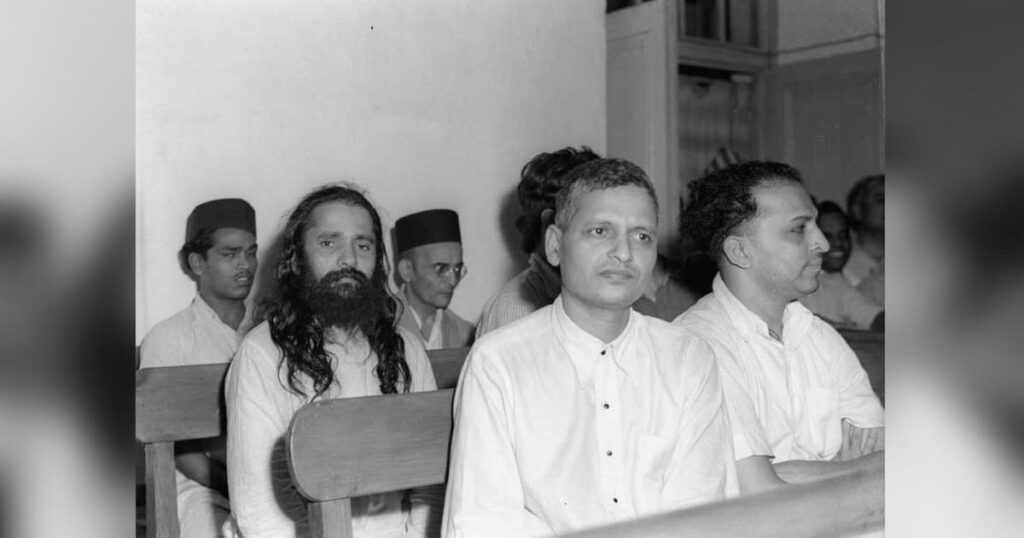
Nathuram Godse was a member of the Hindu Mahasabha, a right-wing Hindu nationalist organization founded by Savarkar. The Hindu Mahasabha had ideological differences with Gandhi, particularly regarding his stance on the partition of India and his advocacy for religious harmony.
Although there is no conclusive evidence to prove that Savarkar directly conspired or ordered the assassination, he had earlier expressed strong criticisms of Gandhi’s approach to partition and his views on non-violence. Additionally, some letters exchanged between Savarkar and Godse suggest a degree of ideological influence and support.
After the assassination, investigations revealed that Godse and his accomplice Gopal Godse, both associated with the Hindu Mahasabha, were influenced by Savarkar’s philosophy of Hindutva. They saw Gandhi as an obstacle to their vision of a Hindu Rashtra (Hindu nation) and believed that his assassination would serve their cause.
Savarkar was arrested in connection with the assassination but was later acquitted due to lack of concrete evidence linking him directly to the plot. However, his association with the Hindu Mahasabha and his nationalist ideology, which shaped the thoughts of Godse, has been a subject of debate and controversy in relation to Gandhi’s assassination.
It is important to note that the extent of Savarkar’s involvement or knowledge of the assassination plot remains a matter of historical interpretation, and there are varying viewpoints on his connection to the event.
